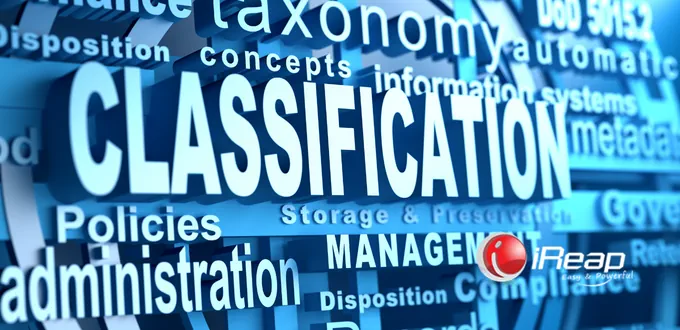
What is the purpose of carrying out cost classification? In running a business, classifying costs aims to make it easier for business owners to recognize every expense incurred to facilitate the process of recording finances.
Additionally, classifying costs also helps you get detailed and factual financial data. Let’s see cost classification and its purpose in this article.
What is Cost Classification?
Cost classification is an effort to classify each expense based on a provision and arranged systematically. Classification of costs can be based on the following:
- Elements or factors that generate costs
- Nature of cost
- Volume/production activities
- Financed object
- Charging accounting period
- Variability or business behavior
To be more explicit, continue reading about the purpose of classifying costs and what cost classifications you need.

What is the Purpose of Classifying Costs?
Cost is the amount of funds/money issued by the company to produce goods or services. Because there are many types of costs that are usually included in company expenses, you, as the company owner, need to classify each of these costs.
The following is the purpose of cost classification, among others:
- Easy to record and calculate.
- To determine the Cost of Goods Sold (HPP) and profit margins (profits) that the company can obtain.
- Cost classification helps companies to have more detailed, systematic, and factual financial data.
- Facilitate financial evaluation and repeat recording of the same expense but with a different name.
- Becomes a guideline for preparing planning for spending money and costs in the next period.
Classification of Costs that Business Entrepreneurs Must Know
1. Classification of Costs Based on Factors Causing Costs to Appear
Within this group, each cost must be identified and grouped based on the elements or factors that cause costs, such as:
- Material cost is the raw materials needed by a company to produce a product/service. For example, cotton and yarn for textile factories, leather and soles for shoe factories, and so on.
- Labor costs or labor costs are costs incurred by the company to pay workers. Generally in the form of wages, salaries, or commissions.
- Other expenses, namely all costs that arise related to business services and operations, including notional assets (building rent, electricity, depreciation of equipment, depreciation of transport trucks, and so on.
2. Cost Classification Based on Its Nature
Within this group, cost classification is determined based on ease of tracking. That said, costs will be easily identified from the triggers or sources of costs.
There are two groups of costs based on their nature, namely:
- Direct costs are costs you can easily trace to the object that creates the cost (a specific product, process, or department). Example: material costs and labor costs for the process of making certain products.
- Indirect costs are costs that cannot be identified specifically as cost objects (cost expenditures do not directly refer to certain products, processes or departments). For example warehouse rent, factory maintenance costs, factory insurance, factory manager salaries, and so on.

3. Classification of Costs Based on Variability, Behavior, or Objects Financed
You can group direct and indirect costs based on the behavior or object financed against the change or intensity of occurrence.
To make it easier to understand costs in this category, see the explanation of the following types of fees:
- Variable costs are costs whose nominal value varies and changes according to the amount of output produced. The nominal can go up or down according to the increase or decrease in production/sales. For example, the cost of purchasing raw materials, sales commissions, wages per production, and so on.
- Fixed costs are costs whose nominal value is fixed and are not affected by sales volume/output changes. However, under certain conditions, the nominal fixed cost per unit can be inversely proportional to sales/production volume changes. Examples of fixed costs: monthly employee salary for a certain period (as long as there is no increase in salary), rent, rates, taxes, insurance costs, and salaries for managers.
- Semi-variable or semi-fixed costs (mixed costs) are mixed costs where these costs have the characteristics of fixed costs and variable costs. Mixed costs can vary depending on changes in production/sales quantities. However, the nominal value can also be fixed and not affected by changes in the amount of production/sales. Examples include machine maintenance and repair costs, building maintenance costs, and so on.
4. Classification of Costs Based on Whether or Not These Costs Are Controlled
The costs included in this group are costs that are influenced by the actions/behavior of a person or a business division within the company, namely:
- Controllable costs are costs whose nominal value can be controlled by an entity in business or by a person through certain actions. For example, a division or manager who supervises and controls costs is directly under their control.
- Uncontrollable costs or costs that cannot be controlled (uncontrollable costs) are costs that cannot be affected by the actions of divisions or people in a business. This means that costs that one person can control may not be controlled by another person.
5. Cost Classification Based on Function
Cost grouping is also common based on the function of the cost itself. That is, for what costs are incurred? The following types of costs are included in this group:
- Production costs are all costs related to production activities, starting from obtaining and purchasing raw materials to processing raw materials into finished goods. Production costs generally include material costs, labor costs directly related to production activities, factory costs, and even direct packaging costs (first-stage packaging).
- Administration costs are all costs incurred by the company related to the preparation of policies, and organizational direction, including efforts to control the course of business. But you also need to know that costs related to distribution, advertising, research, surveys, and so on are not included in administrative costs.
- Cost of sales is the cost associated with creating sales. For example, advertising costs, printing brochures, procuring product samples to be distributed free of charge to potential customers, and so on.
- Distribution costs are costs associated with distributing goods/services. For example, costs for preparing product shipments, packaging, reconditioning, and so on.
6. Classification of Costs Related to Decision Making and Business Control
Often what happens, costs related to business control or those related to decision-making are included in administrative costs. This doesn’t seem right, you know.
Because these costs should be grouped specifically and separately from administrative costs. So, some of the costs included in this group include:
- Marginal cost is the number of funds that changes based on an increase or decrease in output. In practice, marginal cost is almost the same function as variable costs. Examples: direct material costs, direct labor costs, also overhead costs.
- Sunk costs or sunk costs (lost fees) are costs incurred for only one particular decision in a certain period. So, this amount of funds will no longer be helpful in the subsequent decision-making.
Example of a sunk cost: You, as a business owner, want to replace old machines with new, more sophisticated machines to maximize production. This means that the costs incurred for purchasing this machine become the capital invested and are later reduced by depreciation costs until they are used up (no more money left from the machine). - Out-of-pocket costs are expenses made for a decision made at this time. For example, a company decides to lease trucks for its delivery fleet. Then there is a rental fee incurred without considering the vehicle’s depreciation cost. At the same time, companies must also continue to spend money to buy fuel, carry out vehicle maintenance, pay drivers, and so on.
- Opportunity cost is the cost incurred to bring another, better profit. For example, let’s say your business produces high-quality fabrics. But for spinning yarn, you choose to cooperate with a spinning factory instead of developing your spinning factory.
- Imputed costs are imputed costs. That is, costs not included are still considered based on management decisions. Example: interest on capital. You don’t need to pay this interest, but it should be included as relative profitability.
- Differential Cost: Differential cost refers to the difference in total cost between two alternatives. When choosing an alternative increases the total cost, the increase in cost is known as incremental cost. On the other hand, if the choice results in a decrease in total cost, the decrease in cost is called a reduction cost.
7. Classification of Costs for Certain Needs Outside the Business, But Still Related to Business Development
Costs included in this group include:
- Research costs are costs for researching to find new, better products, research related to the latest innovations, and so on.
- Development costs are costs that must be incurred for making company decisions to expand the business through the application of new methods, increasing the quality and quantity of production, and so on.
- Pre-production costs relate to the amount of money that goes out when running trials on new product inventions before carrying out actual production.
There are many types of costs if grouped based on specific qualifications. The purpose of this grouping is to make it easier for you to evaluate, record finances, and even make decisions. Production costs are among the most frequently occurring charges in any line of business. Come on, learn more about Production Cost, Purpose, and Examples of Calculating Production Costs.



